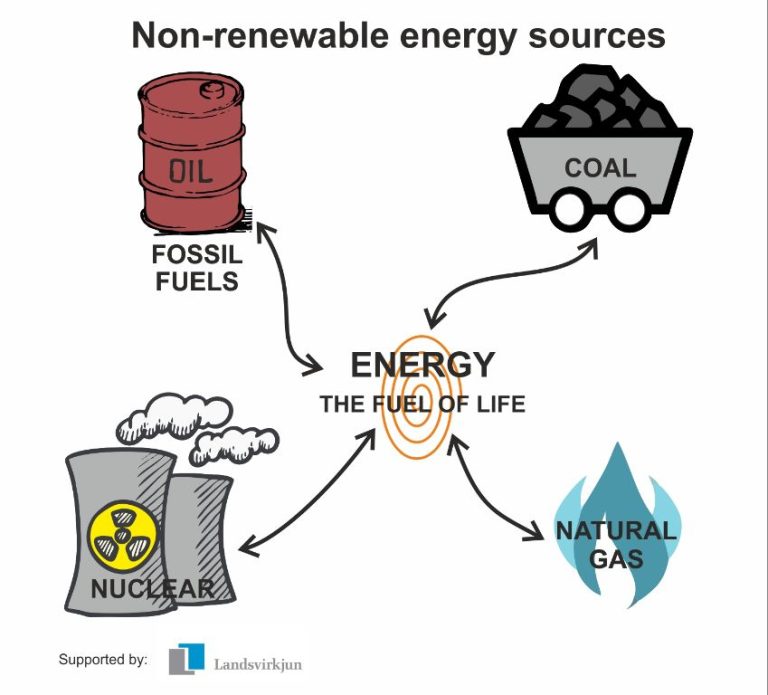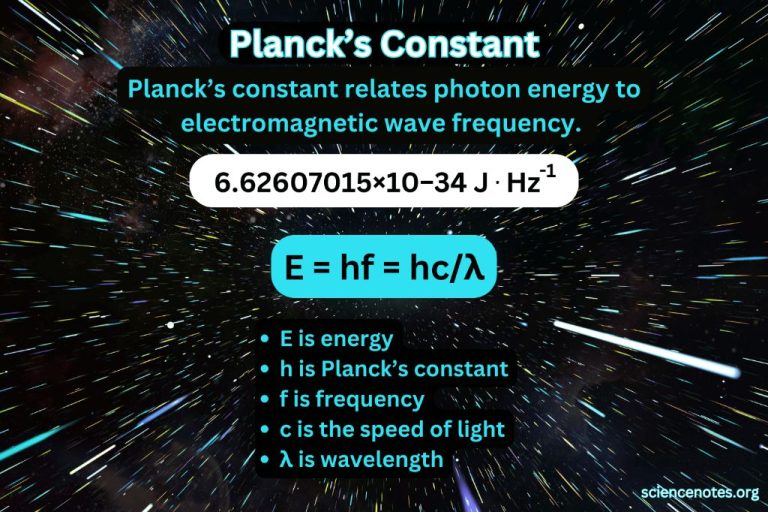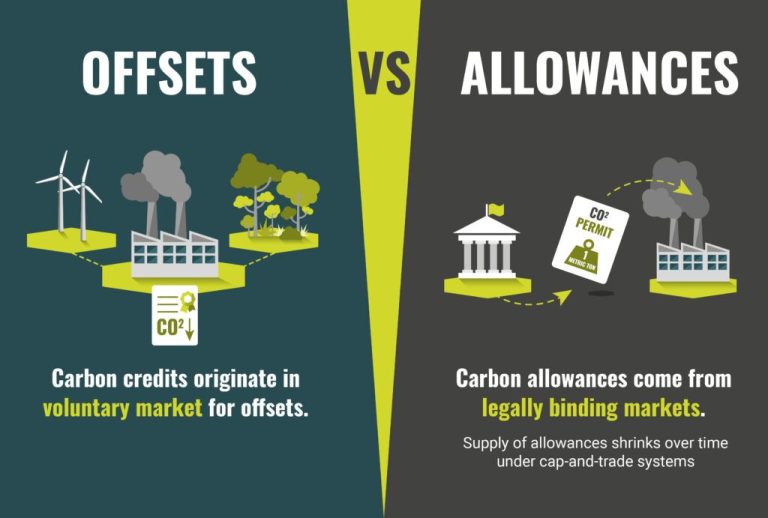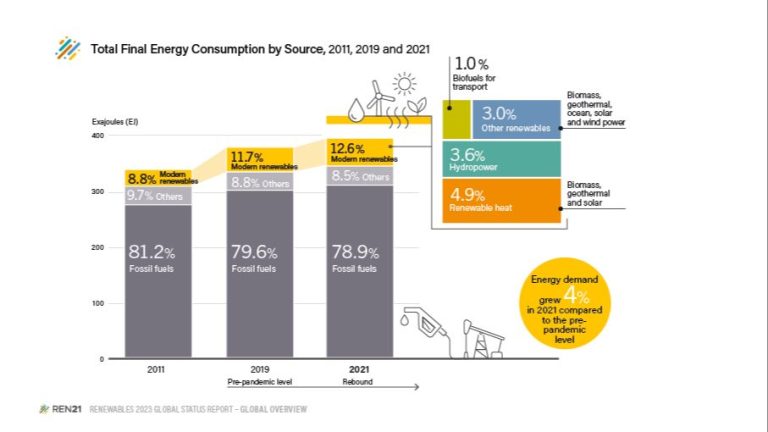How Do You Know If Energy Is Released?
Energy is the ability to do work or produce heat. It is vital to nearly every task we perform and process we rely on. Understanding how energy works and detecting when it is released or transformed is crucial for applications ranging from mechanical engineering to chemical reactions to everyday activities. This article will provide an overview of the fundamentals of energy release and detection.
Forms of Energy
Energy exists in many different forms that can be grouped into major categories. The main forms of energy include:
- Kinetic energy – the energy possessed by objects in motion. Examples are a rolling ball or a speeding car.
- Potential energy – the stored energy possessed by objects due to their position or chemical composition. Examples are a rock held at a height above the ground or energy stored in chemical bonds.
- Thermal energy – the internal energy of substances resulting from the motion of atoms and molecules. Heat is the transfer of thermal energy between objects.
- Chemical energy – energy stored in the bonds between atoms that is released in chemical reactions. Food, gasoline, and batteries contain stored chemical energy.
- Electrical energy – the energy caused by the movement of electrons. Lightning and electricity are forms of electrical energy.
- Radiant energy – the energy carried by electromagnetic waves such as light, radio waves, and X-rays.
- Nuclear energy – the energy stored within the nucleus of an atom that can be released by nuclear fission or fusion.
These different forms of energy can be converted and transferred between objects through various processes.
Energy Transfers
Energy can transfer between different objects or systems through several methods:
Conduction
Conduction transfers thermal energy through direct contact between materials or objects. Heat flows from a warmer object to a cooler one until they reach the same temperature. For example, a spoon heated on a stove conducts heat energy to your hand when you pick it up. Metals are good thermal conductors.
Convection
Convection transfers heat through fluids or gases. As the fluid is heated, it expands, becomes less dense, and rises. Cooler, denser fluid then sinks to take its place. This circulation distributes the heat. Examples include heating air in a room or boiling water in a pot.
Radiation
Radiation directly transfers energy through electromagnetic waves or photons. No direct contact is needed between the objects. The sun warming the Earth is an example of radiant energy transfer. Energy from a fire or lightbulb also radiates outward.
Mechanical Transfer
Mechanical energy transfers occur when a force acts on an object, causing motion. Kinetic energy of motion gets transferred between objects through contact forces like friction, tension, or pressure. For example, billiard balls transfer kinetic energy when one strikes another.
Signs of Energy Release
There are several telltale signs that indicate energy is being released in a process or reaction. The most common signs of energy release are:
Increased Temperature
When energy is released, it is often in the form of heat. This causes an increase in temperature of the surroundings. Exothermic chemical reactions that give off heat are a prime example of this. The increase in temperature indicates that chemical energy is being converted into thermal energy.
Light
The production of light is another sign that energy is being released. Bioluminescent organisms like fireflies and glowworms emit light as a result of chemical reactions within their bodies. The light is a sign that chemical energy is being converted into radiant energy. Nuclear reactions and explosions also release energy in the form of visible light.
Sound
Audible sounds, ranging from soft crackles to loud bangs, booms, and whistles, can signify energy release. The energy excites molecules to vibrate rapidly, producing pressure waves interpreted as sound by our ears. Explosions and combustion are typical sources of audible energy release.
Motion
The generation of motion or kinetic energy is a telltale indicator that energy was released. This could be the motion of an object, particles, or substances. Examples include a rocket launching upward, particles accelerating in a particle accelerator, or the spewing of lava from a volcano. The released energy propels or accelerates matter.
Measuring Energy
There are several scientific instruments and techniques used to measure different types of energy releases and transfers. Some of the main methods include:
Calorimetry
Calorimetry is used to measure the amount of heat energy released or absorbed in a chemical reaction or physical change. This is done using a calorimeter, which is an insulated container filled with a substance. When a reaction occurs inside the calorimeter, the temperature change is measured. Using the specific heat capacity of the substance, the amount of energy absorbed or released as heat can be quantified.
Thermometers
Thermometers measure temperature changes and can detect energy transfers that occur as heat. For example, an increase in temperature indicates that heat energy has been released into the surroundings. Different types of thermometers, such as mercury or digital thermometers, can be used to take temperature measurements during energy transfers.
Motion Sensors
Motion sensors can be used to measure kinetic energy releases and transfers. Sensors such as photogates and accelerometers are able to detect position, speed, acceleration, and other motion characteristics. This data can be used to calculate the kinetic energy of objects using the equation: Ek = 1/2mv2. Comparing kinetic energy values before and after an event helps quantify energy transfers due to motion.
Energy Conservation
One of the most important laws of physics is the law of conservation of energy. This law states that energy can neither be created nor destroyed – it can only be transformed from one form to another. This means the total amount of energy in a closed system always remains constant.
For example, when an object falls, its potential energy is transformed into kinetic energy. The total amount of energy before and after the fall is the same, but the energy has changed form. When fuels like gasoline, coal, or natural gas are burned, their chemical energy is transformed into thermal and light energy. The total energy in the system stays the same.
Understanding that energy is conserved allows us to more efficiently use resources and develop systems that minimize energy loss. Examples of energy conservation include insulating buildings, designing energy-efficient appliances, and developing renewable energy sources. Though energy can change forms, the total amount remains fixed.
Real World Examples of Energy Release
Energy release occurs constantly around us in real world situations. Here are some common examples:
Combustion
Combustion, or burning, is a high-energy chemical reaction that releases energy rapidly in the form of light and heat. The classic example is burning wood, coal, or natural gas to release thermal energy that can then heat homes or generate electricity. Gasoline combusting in car engines is another everyday example.
Batteries
Batteries store chemical energy and release it via redox reactions. When you turn on a device powered by a battery, chemical energy is released from the battery as electrical energy. Common battery types like alkaline and lithium ion power many household items and electronic devices.
Metabolism
The human body and other living organisms release energy from food through metabolic chemical reactions. The digestion and breakdown of nutrients releases thermal and biochemical energy that powers essential life functions.
Falling Objects
When an object falls due to gravity, its potential energy is released as kinetic energy. You can observe this when a ball falls to the ground or when water flows over a dam due to gravity. The height gives the object initial potential energy that converts to motion when released.
Energy Storage
Energy can be stored for later use in various ways. Some common methods of storing energy include batteries, fuels, springs, and elevated objects.
Batteries
Batteries store chemical energy and convert it into electrical energy. They allow energy to be stored chemically and released as electricity when needed. Batteries come in many shapes and sizes, from small button batteries to large lead-acid batteries used in vehicles.
Fuels
Fuels like gasoline, diesel, and natural gas store chemical energy that can be released through combustion. The energy is initially absorbed and stored by plants through photosynthesis. Burning fuels allows their stored chemical energy to be converted into useful mechanical energy or electricity.
Springs
Springs and other elastic objects can store mechanical energy when compressed or stretched. The energy gets stored in the deformation of the spring’s shape. This potential energy can be released to put the spring back into its relaxed state.
Elevated Objects
Elevating an object against gravity gives it gravitational potential energy. This stored energy can be released as kinetic energy when the object falls. Pumped hydro facilities use this principle to store energy in elevated water reservoirs.
Impacts and Applications
Technology and engineering rely heavily on energy principles and harnessing energy efficiently. Some examples include:
Renewable Energy: Wind turbines, solar panels, hydropower dams all convert natural energy flows into usable electricity with minimal environmental impact. Understanding energy transformations is key to developing better renewable technologies.
Transportation: Cars, planes and rockets convert chemical potential energy in fuel into kinetic energy of motion through combustion engines. Improving energy efficiency in transportation aims to maximize useful energy output while minimizing waste heat and emissions.
Electronics: All electronic devices require electrical energy to operate. But minimizing power usage through energy efficient circuit designs, low power components, and power saving modes helps extend battery life and reduce electricity demand.
Home Appliances: Insulation, high efficiency HVAC, EnergyStar certified appliances all aim to reduce energy waste in homes and buildings. Smart energy monitoring can also help identify usage patterns and areas for conservation.
Overall, most modern technology revolves around effectively harnessing energy to perform useful work. So understanding fundamental energy concepts is key for scientists and engineers to develop innovations that use energy more efficiently and sustainably.
Conclusion
In summary, there are various forms of energy like kinetic, potential, heat, and chemical energy. Energy is transferred between objects through processes like mechanical work or heat exchange. Signs that energy has been released include an increase in temperature, motion, sound, or light. Devices like calorimeters can precisely measure energy changes during transfers and transformations. Understanding how energy flows is crucial for improving efficiency, developing technology, and reducing environmental impacts. This knowledge allows us to better harness energy to power our modern lives.
By recognizing how energy transfers and transforms, we gain insight into the natural world. Awareness of energy conversions allows us to innovate and find new energy sources. With responsible use, we can enjoy the benefits of energy while conserving resources for future generations. As our knowledge grows, so too does our potential to utilize energy in safe, sustainable, and productive ways.





